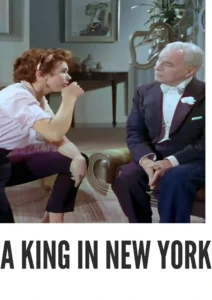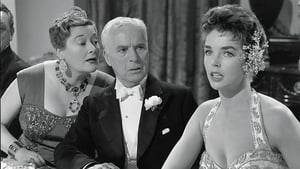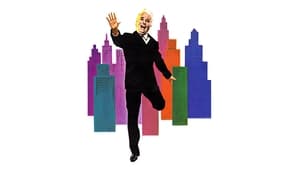Video Sources 0 Views

Download A King in New York (1957) Colorized HD | Charlie Chaplin | Satirical Comedy Gem
Synopsis

Step into the world of Charlie Chaplin’s sharp wit with A King in New York, a timeless satirical comedy from 1957, now beautifully colorized for a viewing experience that brings its poignant message to life. This film, directed by and starring the legendary Charlie Chaplin, delivers a hilarious and thought-provoking commentary on American society, political paranoia, and the immigrant experience during the Cold War era. Perfect for cinephiles and those who appreciate Chaplin’s genius, this HD download offers a visually stunning and emotionally resonant journey.
A King in New York tells the story of King Igor Shahdov (Charlie Chaplin), a monarch who flees his country after a revolution and arrives in New York City virtually penniless. Forced to adapt to a new culture and navigate the complexities of American life, the King finds himself in a series of comical and often absurd situations.
As he tries to make ends meet, King Shahdov becomes involved in television commercials, attends avant-garde parties, and even finds himself mistakenly accused of being a communist. Through these experiences, Chaplin satirizes American consumerism, the entertainment industry, and the pervasive fear of communism during the McCarthy era. He also explores themes of exile, identity, and the struggle to maintain one’s dignity in a foreign land. A King in New York is a brilliant blend of slapstick comedy and social commentary, offering both laughter and insight into the human condition.
The film features a stellar cast of actors who bring Chaplin’s vision to life:
-
Charlie Chaplin as King Igor Shahdov
-
Maxine Audley as Queen Irene
-
Oliver Johnston as Ambassador Jaume
-
Sidney Chaplin as Rupert Macabee
-
Joan Ingram as Mona Cromwell
A King in New York falls into the genre of satirical comedy, blending elements of slapstick, wit, and social commentary. Chaplin uses humor to critique the absurdities of modern society and to explore deeper themes of identity, exile, and political paranoia.
Released in 1957, A King in New York was made during a particularly challenging period in Charlie Chaplin’s life. Having been exiled from the United States in the early 1950s due to accusations of communist sympathies, Chaplin used this film as a form of personal and artistic expression. The film reflects his own experiences as an outsider and his critical perspective on American society and politics. While it was initially met with mixed reactions, A King in New York has since been recognized as a bold and important work that showcases Chaplin’s unwavering commitment to social justice and artistic freedom.
This colorized version of A King in New York has been meticulously restored, using modern digital techniques to enhance the visual experience while staying true to the film’s original atmosphere. The colorization process involved careful analysis of the black and white footage and the application of appropriate colors to enrich each scene. Advanced algorithms were used for color palette selection and image enhancement, bringing new vibrancy to the characters and settings. This painstaking process offers a fresh perspective on a timeless classic, making it even more engaging for contemporary audiences and preserving its legacy for future generations.
-
: Charlie Chaplin
-
: Charlie Chaplin
-
: Georges Périnal
-
: John Dunbar
-
: Attica Film, Archway Film Productions
-
: Archway Film Distributors
-
: 105 minutes
-
: MP4
-
: HD (1080p)
-
: Compatible with most devices, including smartphones, tablets, computers, and smart TVs.
A King in New York (1957) is now recognized as a significant work in Charlie Chaplin’s filmography, offering a blend of comedy, satire, and social commentary. While it faced initial controversy, it remains a powerful and relevant film that speaks to issues of political freedom, cultural identity, and the immigrant experience. As a testament to Chaplin’s genius, A King in New York provides a unique and insightful perspective on the complexities of the modern world.
-
: What is A King in New York about?
-
A: A King in New York is a satirical comedy about a deposed king who seeks refuge in New York City and encounters the absurdities of American culture.
-
-
: Why was A King in New York controversial?
-
A: The film’s satirical portrayal of American society and its commentary on political paranoia made it controversial during the Cold War era.
-
-
: Is this version of A King in New York colorized?
-
A: Yes, this version has been professionally colorized to enhance the viewing experience.
-
-
: What makes A King in New York interesting for Chaplin fans?
-
A: A King in New York offers a personal and artistic reflection of Chaplin’s own experiences as an exile, as well as his sharp critique of social and political issues.
-
-
: What is the download format?
-
A: The download format is MP4, which is compatible with most devices.
-
-
: What resolution is the download?
-
A: The resolution is HD (1080p), providing a high-quality viewing experience.
-
Watch A King in New York Today!












